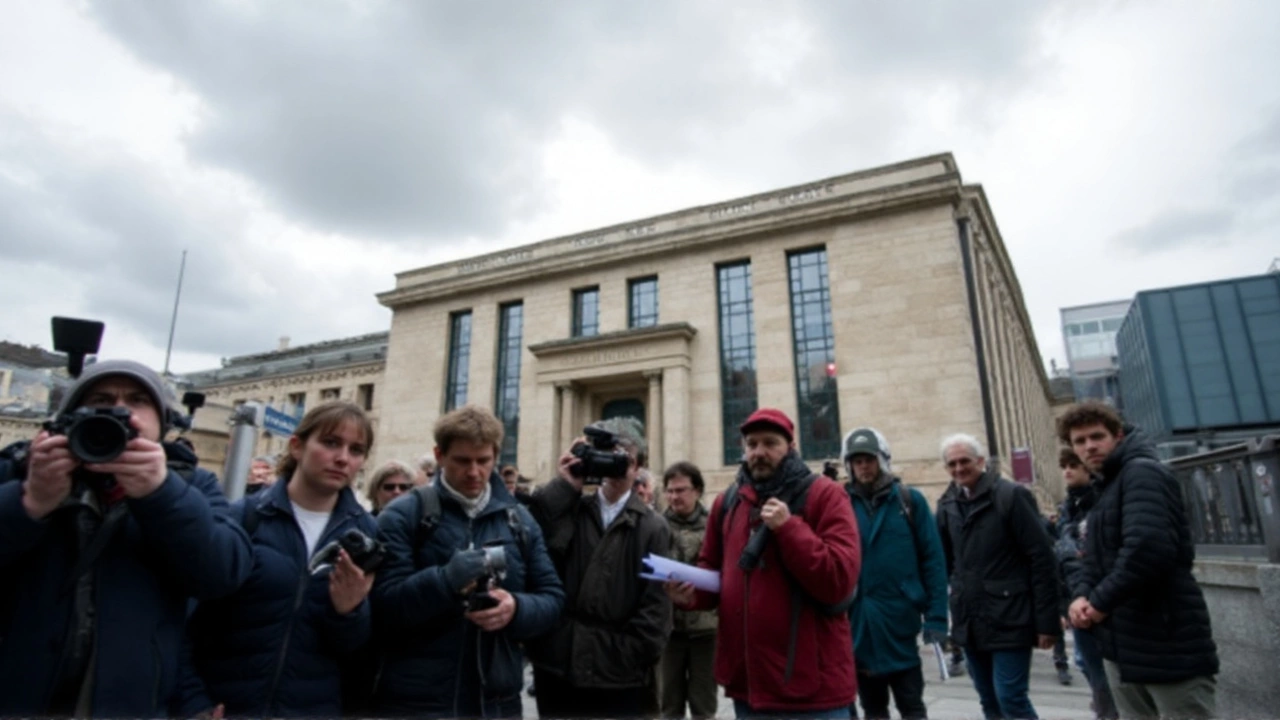What the case is about
Graham Linehan, the 57-year-old creator of Father Ted and The IT Crowd, appeared at Westminster Magistrates' Court and pleaded not guilty to a harassment charge involving 18-year-old transgender activist Sophia Brooks. The case centers on a series of online posts that prosecutors say crossed the line from heated opinion into unlawful harassment.
One disputed post, read in court, described trans women entering female-only spaces as a “violent, abusive act,” and urged people to “make a scene, call the cops and if all else fails punch him in the balls.” The defence says these were remarks within an ongoing policy debate, not targeted harassment. Prosecutors argue the communications caused alarm or distress to the complainant and were part of a pattern aimed at her.
The hearing also touched on the febrile climate around the case. The court was told that within activist circles, an arrest of a high-profile figure could bring “kudos,” a detail that underlined how charged the wider debate has become. None of that shifts the legal test the court will apply: whether the communications amounted to harassment under UK law, not whether the broader argument is popular or unpopular.
The arrest itself added fuel to the controversy. Linehan was detained at Heathrow by five armed officers—standard-issue at the airport, but still striking for an online speech case—prompting intense debate about policing priorities and proportionality. His supporters frame the episode as an overreach; critics of his posts point to explicit calls that read as incitement. The court will focus on evidence, context, and intent, not the noise around it.
Harassment cases involving online speech often turn on a few key questions: Was the communication directed at a person rather than a general audience? Was it repeated or part of a pattern? Did it cause alarm or distress? And did the sender know or ought they to have known the effect it would have? Those are the standards the magistrates will weigh here.
Police, politics and the law
Beyond this defendant and complainant, the case lands in the middle of a national argument over speech, safety and the role of police online. London’s police chief has called the current environment “policing toxic culture wars,” and urged the government to change or clarify the laws. His point was blunt: officers sit in an “impossible position,” expected to defend free expression while also enforcing rules on threats, incitement and harassment that don’t always map neatly onto fast-moving internet disputes.
Several laws potentially touch this space: harassment offences under the Protection from Harassment Act, communications offences for sending grossly offensive or menacing messages, and public order provisions covering threats and incitement. The dividing line is not whether speech offends, but whether it crosses into threatening, abusive or targeted conduct likely to cause harm. That line can be thin in heated debates, and it is precisely where this case sits.
The Crown Prosecution Service is still in discussions with the Metropolitan Police about the file. Linehan has entered a not guilty plea to the harassment charge that brought him to court, while prosecutors continue to review whether any further alleged communications meet the threshold for additional charges. That kind of rolling assessment is common in digital cases, where evidence spans multiple posts and platforms.
At Westminster, politics took notice. Prime Minister Keir Starmer told MPs the UK has a “long history of free speech” and said police should focus on the most serious issues. That doesn’t settle the law, but it signals where ministers want attention—and it adds pressure on police and prosecutors to justify decisions in cases that straddle culture and criminality.
Why this case drew such attention is clear: Linehan is a well-known figure whose views on gender policy have been loudly contested for years. For supporters, he is challenging policy and safeguarding norms; for critics, his posts are abusive and dehumanising. Courtrooms don’t settle public debates, but they do set boundaries for conduct. The magistrates will decide whether the messages at issue amount to harassment of an individual complainant—as charged—or fall within lawful expression.
What to watch next:
- Charging review: CPS is assessing the full set of communications to decide if any further counts are appropriate.
- Legal threshold: Expect close argument over intent, context, and whether posts were targeted at the complainant or made to a general audience.
- Policing guidance: Any outcome may prompt fresh guidance on online speech to help officers navigate complaints consistently.
- Potential penalties: If convicted of harassment, a defendant can face a fine or a custodial sentence; if acquitted, the court may still comment on conduct and proportionality.
As the case moves forward, the issues are bigger than one hearing: the scope of free speech online, the threshold for criminal harassment, and how police manage bitter digital disputes without becoming part of the fight.
